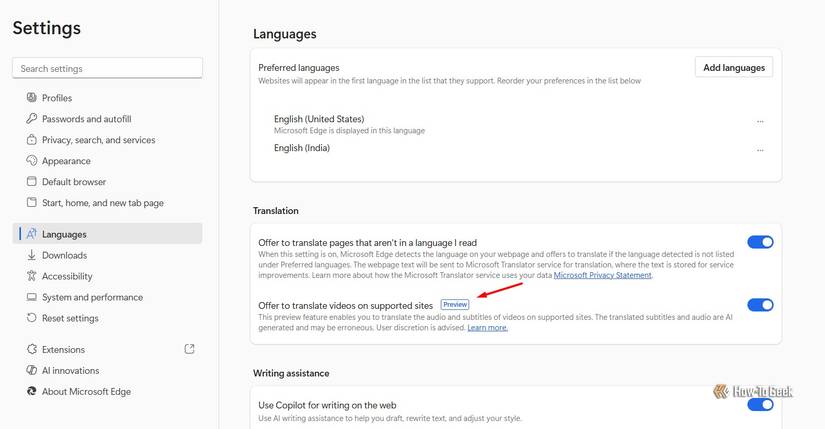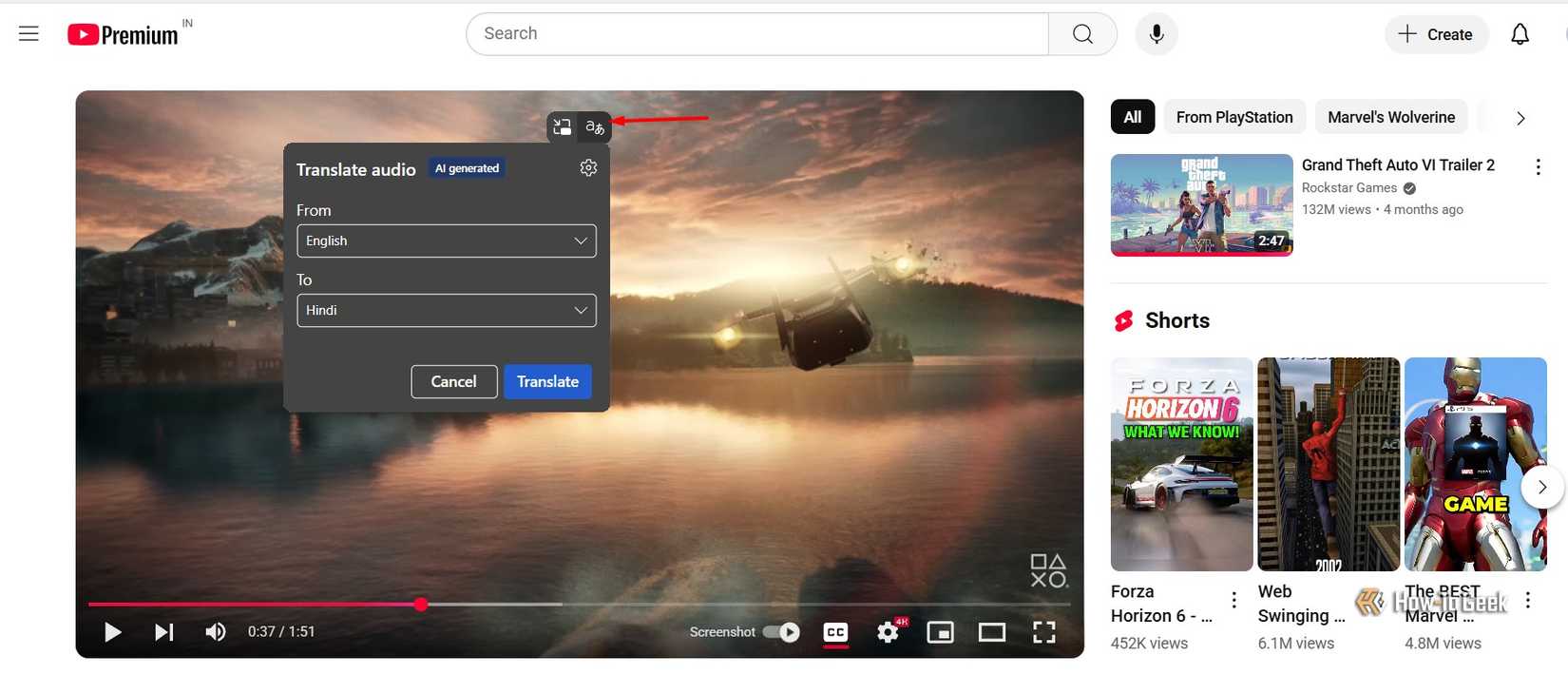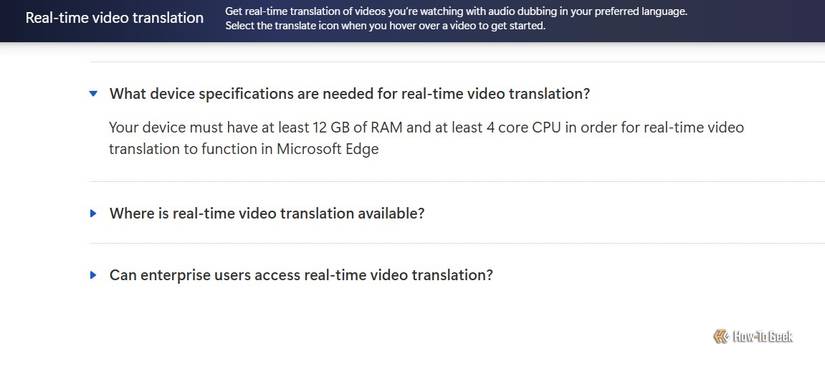[ad_1]
The inability to understand the language used in a video shouldn’t stop you from watching it. That’s why Microsoft is testing a new AI audio translation feature in Edge that allows you to translate audio into your preferred language. However, as much as I want to love it, the feature isn’t perfect and has a long way to go.
How Microsoft Edge’s Real-Time Video Translation Feature Works
Microsoft made many exciting announcements during its 2024 Build conference, one of which was Microsoft Edge’s real-time video translation feature. It was announced that the feature was currently being tested and will would made available to the public in the near future. Interestingly, X user Leopeva64 had access to this feature well before Microsoft showcased it during the conference.
Since then, Microsoft has remained completely silent about the feature. But now, more than a year after its announcement, the feature has returned in Edge, though it is still in its preview stage. To access this feature, you need to have the latest version of Microsoft Edge Beta installed. The feature is available to me in the Microsoft Edge Beta version 141. It is also available in Microsoft Edge Canary version 142. However, Microsoft has yet to bring it to the Edge Stable build.
Once you have the required version of Edge installed, click the three dots in the top bar and select “Settings.” From the left sidebar, choose “Languages,” and under the Translation section, enable the toggle next to “Offer to translate videos on supported sites.”
Next, restart the Edge browser and open YouTube. Search for and play the video you want to translate. You will see a translate audio icon appear at the top of the video.
Click the translate icon, select the current language of the video, and then choose the language you want it translated into. Next, select the “Translate” button. Microsoft Edge will take a few seconds to translate the audio, during which your video will pause automatically. Once the audio is translated, hit the resume button to continue watching the video with the translated audio.
Is the Translation Feature Perfect? Definitely Not
There are plenty of areas where Microsoft needs to improve the real-time translation feature of Microsoft Edge. Let’s begin with the translation part itself.
I know two languages, English and Hindi. I used the translation feature to convert one of MrBeast’s videos into Hindi, but the results were not as good as I expected. The biggest flaw I noticed was that the feature was simply converting sentences from English to Hindi instead of translating them based on the actual meaning conveyed in the video. For instance, at 0:31 in this video, when MrBeast says, “From this point forward…” the translation feature interprets the word “point” as referring to the “decimal” used in mathematics. As a result, the translated sentence becomes completely irrelevant to what MrBeast was actually saying.
Furthermore, the translation feature fails completely when there is loud background music or when multiple people are talking in the video. In such situations, you either hear only the background music or receive a completely nonsensical translation.
There were also instances where the feature converted a male voice to a female one. For example, I translated this Marques Brownlee video into Hindi, and out of nowhere, the feature converted the first few seconds of the video into a female voice.
It has been over a year since Microsoft announced this feature, but it still supports only five languages—Spanish, Korean, Hindi, Russian, and English. At the time of the announcement, Microsoft stated that in the future the feature would work on various websites beyond YouTube, such as Reuters, CNBC News, Bloomberg, Moneycontrol, and more. However, this capability has not yet been introduced, as my testing showed that the feature only works on websites with embedded YouTube videos, not on those that host videos directly uploaded to their own pages.
At one point, you might overlook these drawbacks, but there’s no workaround for the minimum requirements of this feature. Your device must have at least 12GB of RAM and a quad-core CPU to use it. That is a relatively heavy demand for a browser feature, and it may present a problem to systems with less than 32GB of RAM.
My system features 16GB of RAM, so when I used this feature, I only had around 4GB of RAM left for other tasks. As a result, I experienced slight lag and stuttering while the feature translated audio.
Overall, Microsoft Edge’s AI audio translation feature is still far from perfect. First of all, Microsoft needs to work on its minimum requirements to make it available to more users. Then, Microsoft needs to improve the translation aspect as well so that the feature interprets the audio based on the context of the video rather than simply translating word by word.
[ad_2]



